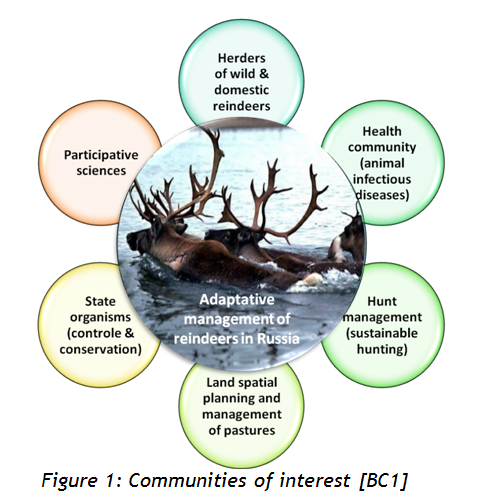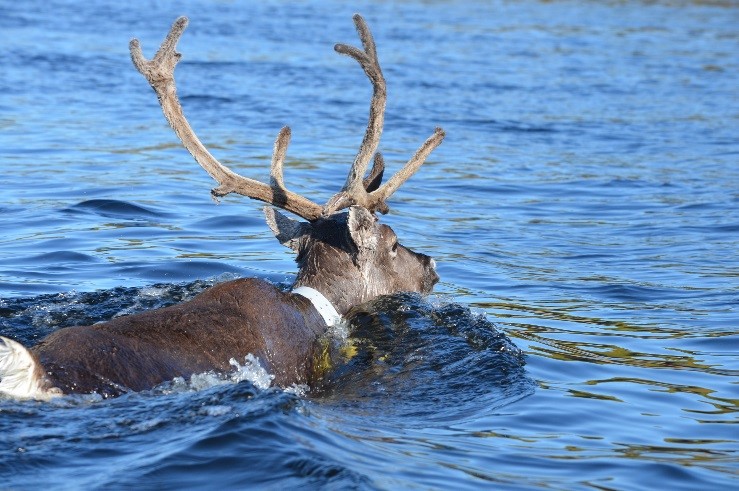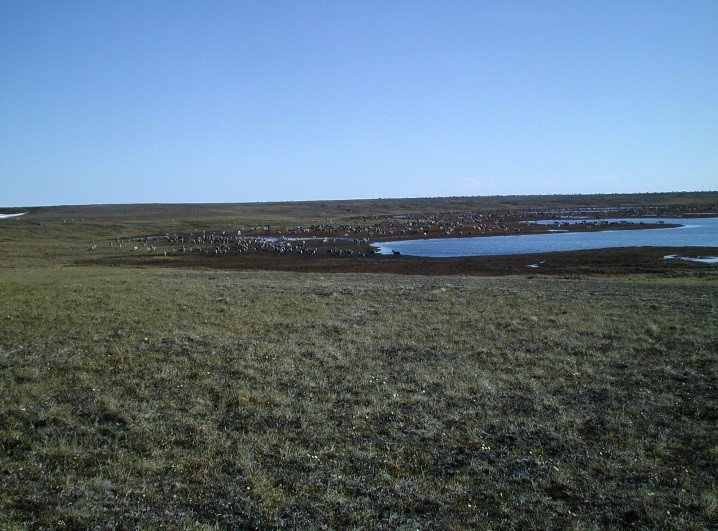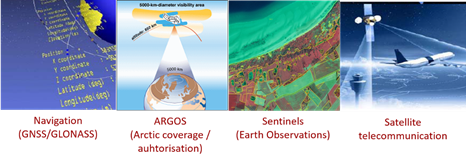
Objectives of the service
SISMA is an efficient vulnerability monitoring system with major social benefits:
- To enhance food security and disease prevention,
- To insure income and employment of present and future generation.
Two business cases have been addressed:
- The Avian Influenza risk in France,
- The Reindeers’ challenges in Russia.
The first case is closed because the requirements expressed are not conducive to business. The second case has identified the opportunity and viability of a large market, a service targeting three complementary user communities:
1) Herders and Natural reserves for connecting reindeers to herders to:
- Reduce animal loss,
- Increase the number of animals managed or save time for other activities.
2) Health communities for building the capacity of veterinary services over the territory to:
- Reduce detection delays of diseases,
- Support decision making, control of operational costs.
3) State agencies (Agricultural, Environmental) & participating scientists for knowledge of ground occupation by the herds to adapt management strategies to climate change and:
- Secure critical reindeer habitats and food supply,
- Reduce reindeer fragmentation, land conflicts,
- Set up of conditions for economic development of reindeer husbandries (e.g. for subsidies, meat exportation),
- Develop sustainable hunting of wild reindeers.

® CLS 2017
Users and their needs
All users need a low-cost monitoring solution of individual performance of reindeers and distribute actionable information at herd or local - regional level, alerts, maps and statistics which support decision-making. The restitution differs depending on users.
1) To reduce losses, dispersion of animals and neighboring conflicts, herders and natural reserves need to follow-up the journey, activities and habitats, and temperature of their animals, and be alerted in real time on sensitive situations such as entering/outering specific areas (virtual fences), the presence of other herds and the sharing of pasture resources.

® Institute of Biological Problems of Cryolitozone of Russian Academy of Sciences 2017
2) To enhance disease risk assessment, the Health care system needs SISMA to establish communication with on site breeders & veterinarians to get early information on disease or receive instructions when risk, to share the knowledge of herds location, diseases, history of displacements, to identify propagation pathways and set up action plans.

® Institute of Biological Problems of Cryolitozone of Russian Academy of Sciences 2017
3) To monitor land access and pasture sharing, to estimate-trace the abundance of population or to adapt compensation process, local authorities and State agencies need SISMA to ensure a global watch of reindeers, recording, managing, qualifying and enabling the sharing of monitoring data together with continuous Earth observations and climate data.
Service/ system concept
This common and scalable system architecture supports 3 service lines, each one fitted to each of the users working environment:

® CLS 2017
1) “Space internet Of Life for herders: It relies on a low cost hybrid collar system (Argos satellite / LORA IOT + temperature captor) and a phone application to declare/describe the equipped animals/herd/owner and disease diagnostics, as well as to read/visualize their alerts and monitoring data.
2) “Disease channel” for health communities: It collects and localizes the early warning of diseases from on-site communities and access sharable monitoring data of first service in order to identify the location of infections and appearance of syndromes diseases.
3) “Reindeer data center” for local and State Agencies: It provides & maintains a suite of standard & sustained technology to herders and manages data sharing. It consolidates & fuses historical and current animal records with Earth Observations and climate data in a GIS data base. It provides also statistics and elaborated reports to support further analysis. Data centers can be accessed through cloud service or installed on a customer premises
Space Added Value
The use of space systems to support herding is required in Northern Russia because of the herding surface extent, the weakness of the means of terrestrial communication and the low population density (1 million inhabitants).

4 space systems are involved:
- GNSS/GLONASS navigation system to get referenced timing and improve positioning.
- Argos data collection system to compensate the very incomplete terrestrial communication & coverage of IOT base stations.
- ARGOS has proven its performance for reindeer tracking for conservation purpose. Numerous scientific programs are using ARGOS to monitor wild species. The new low cost Argos system includes a frequency band dedicated to commercial application, to support cattle management over large areas.
- Earth observations by satellite to add strong value to field collected data, through the seamless mapping of the herd’s habitats and changing conditions (e.g. weather, land cover, climate indicators ...).
- The free EU Sentinel data strategy will help the scientists to reduce the cost of acquisition and workload needed for harmonization of data (Sentinel 2, SPOT series, USGS LANDSAT).
- Iridium satellite communication because the solution integrates the current working environment in Russia, the Iridium phone/tablets equipment of herders and veterinarians and on the shelf IOT base stations.
Current Status
The project ended early in 2018. The feasibility study has drawn up a roadmap for sustainable satellite-based services to support livestock management, disease control, and services dedicated to the sustainability of ecosystem. SISMA is optimised to reduce the acquisition costs, to ensure continuous and homogenous data collection and support data management and sharing.
In this favourable context, CLS would like to take advantage of the momentum created to pursue the work with a regional demonstration project:
- To develop the hybrid monitoring solution
- To make available a common suite of means for a large- scale trial
- To have benchmarked and users tested the services over a full year period
- To confirm the profitability in a user perspective,
- To adjust and prioritise needs for scaling up the commercialisation.



